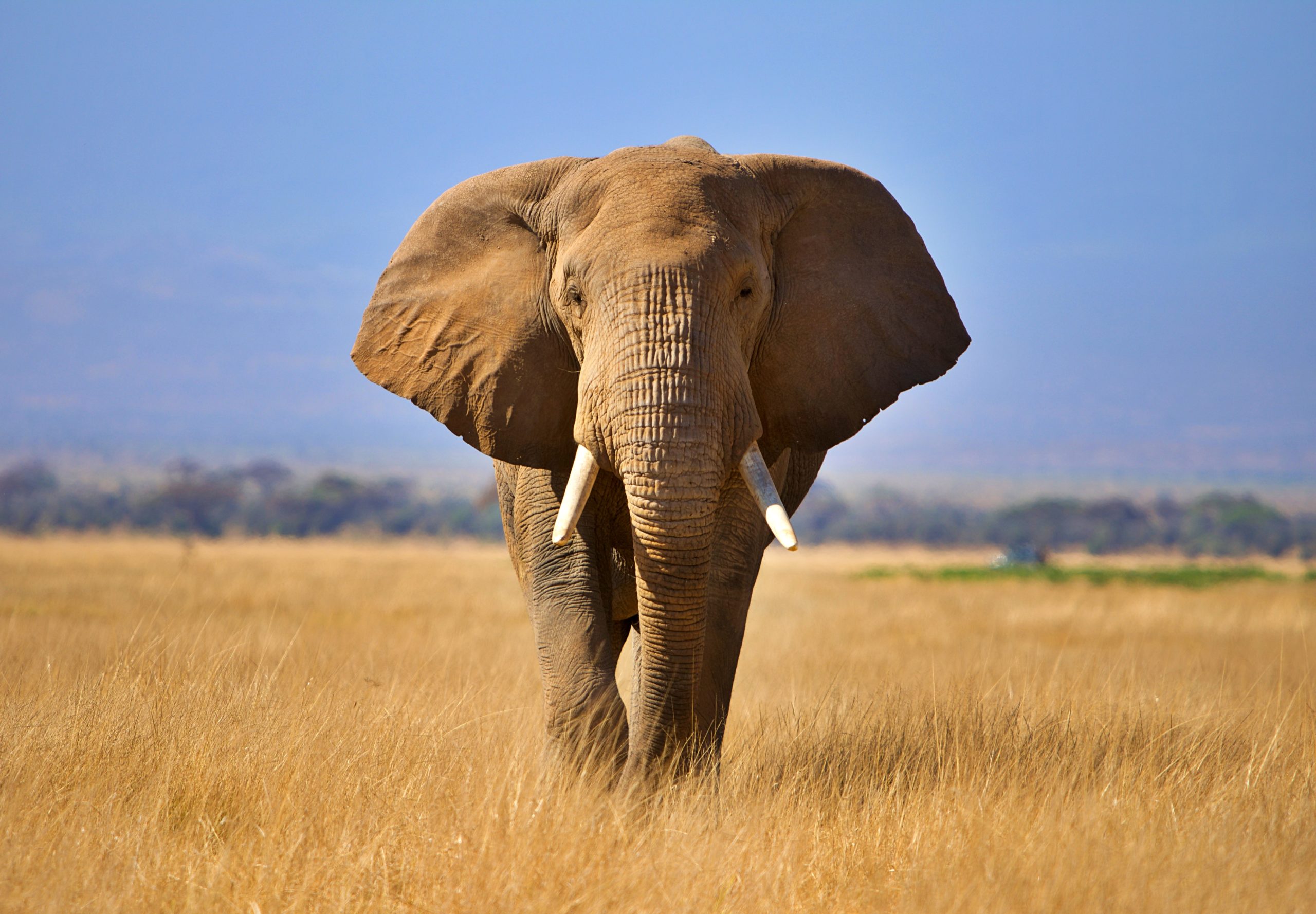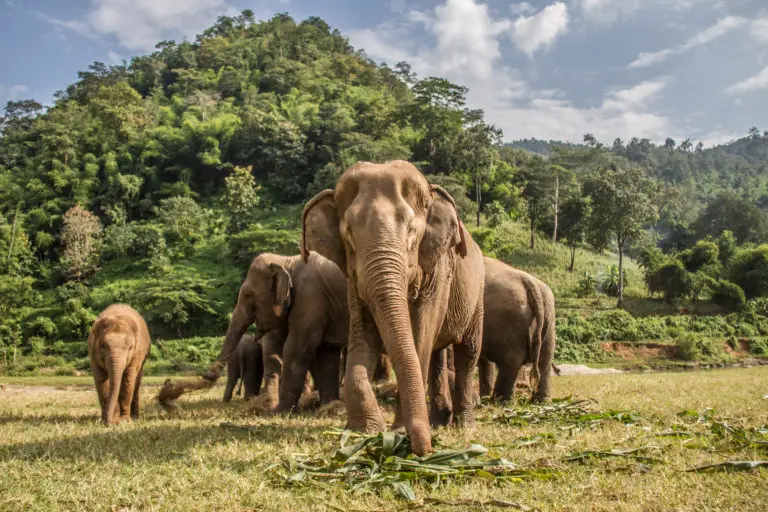As elephants roam the vast African savannah, they appear to have a unique way of staying connected with their relatives. Researchers have discovered that wild savannah elephants in Kenya use specific vocal sounds to label each other, enabling communication within the herd. Although the research is yet to undergo peer review, the findings, if verified and reproduced, would make elephants the only non-human animals known to communicate using distinct names. While bottlenose dolphins can also use individual “names” to establish social networks, scientists assert that this is slightly different from human communication. 
Unlike human names, which are often reflections of cultural practices and values, elephant names rely on imitation of unique noises. This seemingly arbitrary nature of human naming appears to apply to elephants as well, as behavioral ecologist Michael Pardo from Colorado State University explains in a lecture available on YouTube, stating that these findings have the potential to “blur the line” between unique features of human language and those found in animal communication systems.
The Complex Communication System of Elephants
Elephants are renowned for their loud, trumpet-like vocalizations, although most of their communication is beyond the range of human hearing. Instead, these large mammals primarily produce low-frequency rumbles that can travel as far as six kilometers and resonate through the feet of other elephants. This hidden language serves as a vital tool for elephants as they spend the majority of their time foraging for food. It is not uncommon for members of the herd to lose sight of one another while searching for sustenance, making calling each other by their names a useful way to maintain group cohesion.
To investigate this possibility further, Pardo and his colleagues conducted extensive recordings of elephant rumbles in the wild at two different locations in Kenya. The team amassed a collection of 625 rumbles, including contact rumbles exchanged when elephants were in proximity to each other and greeting rumbles that occurred when elephants reunited after a period apart.
Researchers employed a machine learning model to analyze various features of these rumbles, successfully predicting the intended recipient of the rumble. The results indicate that certain rumbles were specific to individual receivers, and they did not rely on imitation. To validate this further, scientists played back some of these rumbles to 17 wild elephants, observing that individuals responded more quickly and vocally when they heard their own “name” being played. Additionally, consistent vocal labels were used across the herd, indicating that these names were not restricted to broad societal roles.
The Significance of Elephant “Names”
The study found that approximately one-fifth of all recorded elephant rumbles in Kenya were identified as individual vocal labels, similar to how human names are used. Just like in human communication, names may not always be necessary or may serve as a part of a larger message. Elephant rumbles convey a wide range of information, including age, sex, and emotional state. In certain situations, these factors might take precedence over addressing an individual by name.
According to the researchers of the study, “elephant vocal labels may be embedded within a call that simultaneously conveys multiple additional messages.” The richness of information in elephant vocalizations makes it challenging to identify the specific acoustic parameters that encode receiver identification.
The Role of Artificial Intelligence
Artificial Intelligence (AI) plays a crucial role in advancing our understanding of animal communication. AI programs have demonstrated their ability to analyze complex aspects of how animals like elephants communicate. This means they can help us grasp the subtle details of their social interactions. In the future, AI might enable researchers to identify and respond to individual elephants by recognizing their unique vocalizations, essentially understanding and addressing them by their names. This development holds great potential for enhancing our knowledge of how these animals communicate with each other. Ultimately, AI allows us to decode and interpret the intricate communication systems of animals like elephants, potentially leading to more effective conservation efforts and a deeper appreciation of the rich world of animal language.
Elephants’ ability to use vocal labels to communicate is a testament to the complex and sophisticated nature of their social interactions. This study not only highlights the unique features of elephant communication but also showcases the potential of artificial intelligence in unraveling the mysteries of animal language. As we continue to study and appreciate the wonders of the animal kingdom, we gain a deeper understanding of the diverse ways in which living creatures communicate and navigate their world.
Unlocking the Secrets of the Animal Kingdom
The research on elephant vocal labels contributes to the increasing body of scientific knowledge about how animals communicate. Animals have unique and intricate ways of expressing themselves, such as the captivating songs of humpback whales or the rhythmic dances of honeybees. These studies help us understand that there is a rich world of communication beyond human language.
By exploring these mysteries, scientists are revealing the complexity of animal communication systems. This knowledge emphasizes the significance of conserving and safeguarding these remarkable creatures that coexist with us on Earth. It underscores the importance of preserving not only the animals themselves but also the ecosystems in which they live. Ultimately, understanding animal communication enhances our appreciation of the natural world and reinforces the need for conservation efforts to protect these extraordinary beings and the environments they inhabit.
Recent Discoveries in Elephant Intelligence and Social Behavior
Recent research on elephant intelligence and social behavior has continued to shed light on the remarkable capabilities of these majestic creatures. One noteworthy discovery comes from studies conducted on Asian elephants (Elephas maximus) in Cambodia. Researchers have found that elephants exhibit a profound understanding of cooperation and problem-solving, surpassing the abilities of many other animals. In experiments, they have demonstrated the ability to work collaboratively to complete tasks, such as retrieving food placed out of reach, showcasing their advanced cognitive skills.
Additionally, investigations into elephant communication have revealed fascinating insights. Elephants are known to communicate through a range of vocalizations and gestures, but recent studies have shown that they also employ infrasound, which consists of low-frequency sounds below the range of human hearing. This infrasound communication allows elephants to convey information over long distances, facilitating social interactions and coordination within herds.
Furthermore, advancements in tracking technology and GPS monitoring have provided researchers with valuable data on elephant migration patterns and social dynamics. These studies have highlighted the importance of maintaining large, connected habitats for elephants to thrive and maintain their intricate social structures.
Advancing Our Understanding of Elephants and the Natural World
The recent discovery regarding elephants has profound implications for our understanding of these magnificent creatures and the broader natural world. The revelation that elephants are not only highly intelligent and emotionally complex but also possess an advanced system of communication through low-frequency infrasound is nothing short of revolutionary.
Moreover, the significance of this finding extends beyond the realm of elephants. It highlights the interconnectedness of all living creatures and emphasizes the need for a more holistic approach to conservation. By comprehending the depth of elephants’ social networks and their role in maintaining ecosystem health, we gain valuable insights into the intricate web of relationships that sustain our natural world.
This discovery underscores the imperative of respecting and preserving the natural world and its inhabitants. It reminds us that every species, no matter how different from us, plays a unique and vital role in maintaining the delicate balance of our planet. To safeguard our future, we must continue to unravel the mysteries of the natural world and act as responsible stewards of the Earth’s biodiversity.
Sources:
African elephants address one another with individually specific calls
Michael A Pardo; Colorado State University
Evidence of means-end behavior in Asian elephants (Elephas maximus)

This Site Was Inspired By An Interest in Protecting the Environment:
We had the privilege and joy of learning from Dr. Charlie Stine who instilled a love for the natural world through incredible field trips with the Johns Hopkins Odyssey Certificate program in Environmental Studies. At the time, the program was endorsed by the Maryland Department of Natural Resources. Sadly, after Dr. Stine retired, the program was phased out. We hope that we honor his legacy by shining a bright light on environmental issues and sharing good news about the success of various conservation programs when possible.



